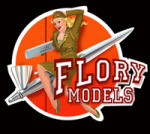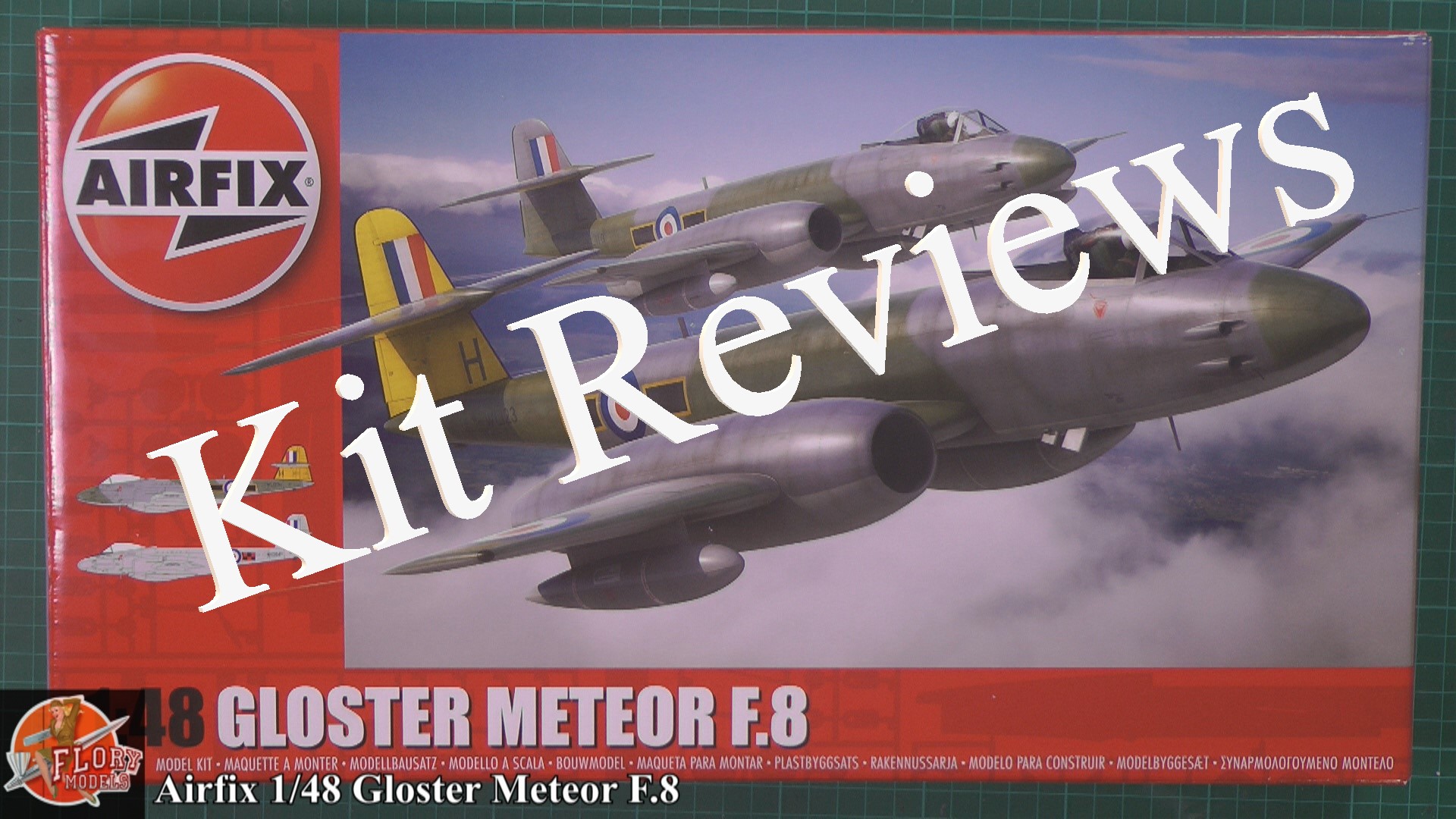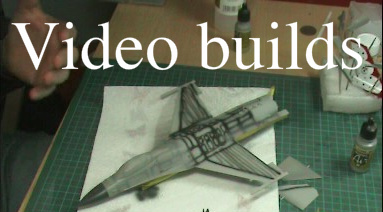1:32 Revell He-162A-2 Salamander
The Kit
Revell 1/32 He 162A-2 Salamander (04723)
After-market Parts
Aires Detail Set (2033) Cockpit, Wheel wells, Wheels and Gun bay
CMK BMW 003 Engine Set (5013), CMK Flaps and Tail surfaces
Paints
Xtracrylix Hellgrun RLM82, Lichtblau RLM 76, Grau RLM 02, Braunviolett RLM 81
,Silber RLM 01, Schwarzgrau RLM 66
Tamiya Black XF-1, Semi Gloss Black X-18, White XF-2
The Kit
Revell 1/32 He 162A-2 Salamander (04723)
After-market Parts
Aires Detail Set (2033) Cockpit, Wheel wells, Wheels and Gun bay
CMK BMW 003 Engine Set (5013), CMK Flaps and Tail surfaces
Paints
Xtracrylix Hellgrun RLM82, Lichtblau RLM 76, Grau RLM 02, Braunviolett RLM 81
,Silber RLM 01, Schwarzgrau RLM 66
Tamiya Black XF-1, Semi Gloss Black X-18, White XF-2
History
At the beginning of the September 1944 the RLM announced a competition for a new single seat jet fighter with the code name 'Volksjager' (people's fighter). The Volksjager was designed to replace the Bf 109 and the Fw 190 to counter the air superiority of allied fighters. Five companies took part in the competition: (Arado, Blohm und Voss, Focke-Wulf, Heinkel, and Junkers.) The final winner was the company of Ernst Heinkel. The intensive work of Heinkel's and partners team lead to the project 1073 Spatz, later known as Salamander. This was the fastest programmed fighter development in the history of aviation, within onlyy 3 months the prototype was ready for its first test flight.
It was a small in dimension but of extremely elegant looking design with the BMW 003 engine in the upper part of the fuselage. The construction of the fuselage and the tail's was in aluminium exexcept for the cone and the access panels which were made from wwood. The same material used for the constructions of the wings, a dangerous decision especially for a high performance jet air plane. That decision was made to simplify the construction and the llack of appropriate materials in the chaos during the last months of the war.
The cockpit design included many features of post war aircraft including an ejection seat similar to those found on the He 219 and Do 335. The He-162 carried and armament two 20 mm canons.
On December 6th in 1944 the first test flight of the prototype was accomplished with total success. The aircraft was capable of 900km up in the 6,000 m altitude and showed good flying characteristics. Four days later a disastrous accident came up when a part of the wing fell off killing the pilot and destroying the plane. The lack of strong glue was found to be the reason behind the crash. The Volkjager's program carried on in underground facilities in an attempt to protect it from allied bombing. Parallel to the production Ernest Heinkel proceeded to further 26 variation of the aircraft including v tails, stronger engines and new wings. None of these ever flew.
The first He 162A-2 was sent into combat with squadrons of JG/l (the only unit ever use it) in the early April 45 when all were lost for the Germans. The lack of fuel and experienced pilots lead the majority of the 200 He 162 grounded for most of the time. No more than 10 aerial kill being confirmed by the type in combat.
After the end of the war a large number of 162 were transported to the USA, United Kingdom, France and Russia for technical evaluation for future projects.
The Aircraft Modelled
Heinkel 162, W.Nr. 120077 originated at Heinkel North (Roststock-Marienehe) production line and was probably completed in April 1945. Colour photos from the same production run show a green fuselage (RLM 82) and a brownish (RLM 81) engine cowling. The lower fuselage, the under wing surfaces as well as the tail plane were painted RLM 76. Upper wings were probably painted RLM 81/82.

According to Gerhard Hanf the turbine front cowling was red. Colour photos that verify this do not exist. Red are also the arrows on the fuselage as well as the "1". The former "2" was painted over. On both sides of the fuselage the emblem III. /JG 77 is painted on. On the left fuselage side the word "Nervenklau" (Nerve Stealer) is neatly painted. The ground crews were responsible for that. On April 29th 1945, Lieutenant Hanf flew his 18th and last time with the He 162. W.Nr. 120077 survived and is part of the collection of the "Planes of Fame" collection in Chino, USA.
The Kit
Revell He 162A-2 Salamander (04723)
After-market Parts
Aires Detail Set (2033) Cockpit, Wheel wells, Wheels and Gun bay
CMK BMW 003 Engine Set (5013)
Paints
Xtracrylix Hellgrun RLM82, Lichtblau RLM 76, Grau RLM 02, Braunviolett RLM 81
,Silber RLM 01, Schwarzgrau RLM 66
Tamiya Black XF-1, Semi Gloss Black X-18, White XF-2
References
Books
Heinkel He-162 Spatz - Volksjager by Miroslav & Bily, Miroslav Balous
Advanced Aircraft Modeling - Heinkel He-162 Volksjager Tolis Athanasopoulos
Internet
Memeorial Flight Restoration – He 162 A2


Some of the molded detail on the walls of the cockpit, this needs to be removed and thinned ready for the replacement resin cockpit.
Below the detail has been removed and the plastic thinned, I used a Dremel to remove the bulk of it followed by varying grades of sanding sticks.
Next job was to remove the a small rectangle where the chutes for the expelled shells should be.
I masked this with electricians tape to stop me slipping and scoring the plastic. I used the Trumpeter scriber to start followed by the Tamiya one. 
The back of the resin cockpit would have blocked the walls of the chute and was cut away.
The chute walls were made with some plastic card to give some depth when looking directly down them. .
.
Below is the completed chute.
I decided to removed the nose, this area is very detailed in the resin set so it seemed a shame to hide it.
The almost completed cockpit, I got so involved in painting and building I forgot to take pictures of each stage... doh!
The instrument panel painted up, might use a light wash to difine this better. 
The resin replacement wheel bay also painted ready for installation. This is a really nice moulding can the details came up well.
The bay installed in the fuselage, not too shabby. 
I did have a wee problem joining the two halves, I split it and used super glue with talc to get a nice joint.
This arrived in the post, resin replacements for the tail and flaps. Actually there's not much of the original kit being used. 
The next two images show the surgery on the wings.

Resin replacement tail in place.
And the wing are on
The next major part of the build will be the resin replacement BMW 003 engine
The resin parts were given an undercoat of Tamiya matt black.
The front part of the intake was painted with Alclad matt aluminum, the front body steel, the next section Tamiya gunmetal, Alclad exhaust for the next section, and matt aluminum.
This is the completed engine, however reference photographs show that the majority of the plumbing is missing.
The intake was then covered with maskol flicked on by a very dry brush, then spray with Tamiya flat red. The maskol was then removed to reveal the chipping effect.
The valve below is missing a connector to attach some of the plumbing, I'd this from some punch out discs and styrene rod
The main pipe, made from fuse wire, to the oil tank is added
Some more plumbing being threaded under the existing resin pipes
Running some more cables that were very obvious from reference pictures. The thin masking tape will be painted to look like connectors.
The almost completed article, I'm leaving it to dry overnight before touching up the paint work.







I bought these two figures for another project which I'll be hopefully starting towards the end of the year.
I've never attempted figures before so this will be a bit of practice, I'll strip the paint off later.

All cleaned up and ready for painting.

I airbrushed the with a black base coat, they look nothing like the images that came with the figures but as I said this is just a bit of practice I'll repaint later.

Nearly ready for the final reveal.
















Thanks
Dougie 










